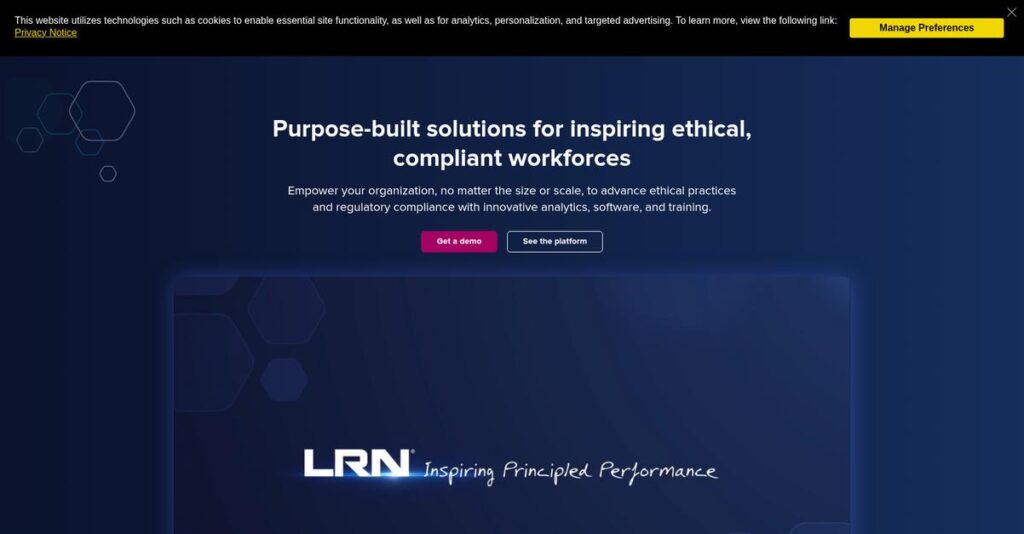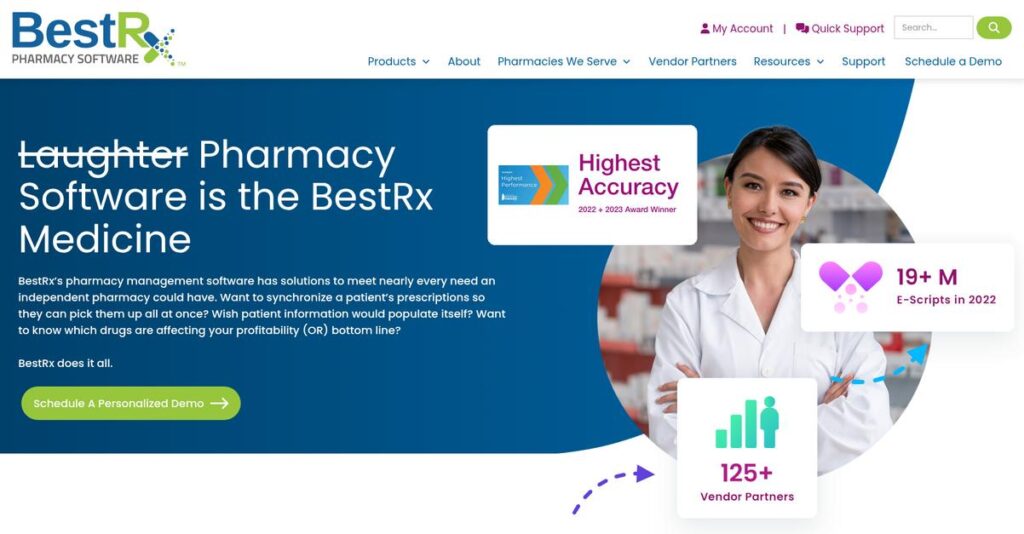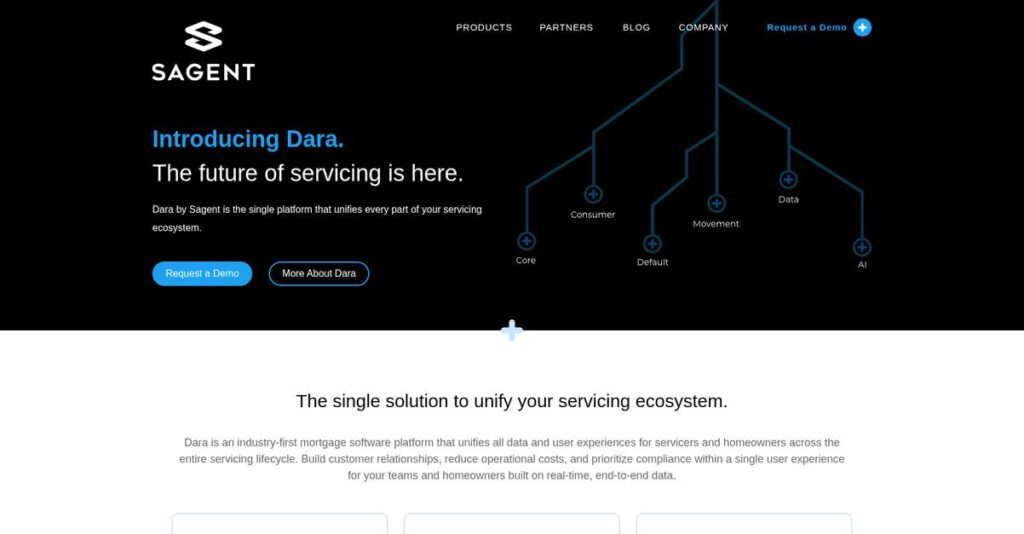Tired of drowning in unorganized machine data?
If you’re here, you’re probably struggling to make sense of overwhelming log files, security alerts, and performance issues—all coming from a dozen different tools.
The real headache? Lost hours chasing down root causes instead of fixing them and seeing your day slip away to endless manual searches.
Splunk tackles this problem by turning all that messy machine data into actionable insight on one unified, AI-driven platform. After deep hands-on testing, I’ve seen how it brings together security, observability, and data analytics in a way that highlights real problems fast.
In this review, I’ll break down how your team can finally see everything in one place and actually act on critical issues before they become major incidents.
You’ll find a thorough Splunk review of features, pricing, setup tips, and how Splunk compares with rivals—focused on helping you make a confident decision.
By the end, you’ll know exactly the features you need to finally fix your monitoring, security, and troubleshooting pain.
Let’s dive into the analysis.
Quick Summary
- Splunk is a platform that collects, indexes, and analyzes machine data to provide real-time IT, security, and operational insights.
- Best for enterprise teams needing deep security monitoring, observability, and large-scale data analytics.
- You’ll appreciate its powerful search language and broad integrations for unified security and IT intelligence.
- Splunk offers flexible pricing including data ingestion and workload models, with free trials available for cloud and enterprise versions.
Splunk Overview
I find Splunk’s foundation impressive. They’ve been tackling machine data since their 2003 founding in San Francisco, with a clear and consistent mission of making your operational data truly valuable.
What really sets them apart is their dedication to turning massive data into clear answers. They primarily serve large enterprises, government agencies, and universities that need serious firepower for complex security, IT, and operational challenges, not just simple logging.
The recent $28 billion acquisition by Cisco is a huge, strategic move I’m watching. Through this Splunk review, you’ll see how it aims to unify powerful network insights with their data platform.
- 🎯 Bonus Resource: While we’re discussing enterprise solutions, understanding how document processing software can fortify your security and compliance is equally important.
Unlike competitors requiring heavy customization, Splunk delivers a more unified, enterprise-grade solution. I believe its real strength is the powerful yet intuitive Search Processing Language, which significantly simplifies deep data investigation for your technical teams.
They work with over 90 of the Fortune 100 companies, plus major federal agencies and top service providers who rely on them daily for mission-critical security and operational intelligence.
Currently, their strategy is laser-focused on a unified security and observability platform powered by practical AI. This directly addresses your organization’s growing need for a single, intelligent view of your entire infrastructure.
Let’s dive into their feature set.
Splunk Features
Drowning in a sea of unanalyzed machine data?
Splunk is a multi-solution platform that turns your raw data into actionable insights for security and operations. These are the five core Splunk solutions that bring clarity to your complex IT environment.
1. Splunk Cloud Platform / Splunk Enterprise
Can’t make sense of all your data sources?
Disparate, unstructured machine data makes it impossible to gain real-time visibility. This leads to critical insights being missed.
Splunk’s core platform ingests and indexes data from virtually any source, centralizing it for powerful analysis using SPL. What I found impressive is its ability to normalize diverse data types, making everything searchable and reportable. This foundational solution acts as your single source of truth for all operational data.
This means you can finally unify your data, gaining comprehensive visibility into your entire IT infrastructure.
2. Splunk Enterprise Security (ES)
Worried about undetected threats lurking in your network?
Managing security events across various tools creates blind spots and slows down response. Your team might miss critical security incidents.
Splunk ES aggregates security data into a unified SIEM, enhancing threat detection and streamlining incident response. From my testing, its pre-built dashboards and correlation rules significantly accelerate threat visibility for SOC teams. This solution empowers you to proactively hunt for threats and manage security operations effectively.
The result is a stronger security posture for your organization, with faster detection and response to cyber threats.
3. Splunk SOAR
Tired of manual, repetitive security tasks?
Repetitive security operations waste valuable analyst time and slow down incident response. This can lead to longer breach times and higher costs.
Splunk SOAR automates incident triage and orchestrates complex workflows, significantly improving analyst productivity. This is where Splunk shines; its ability to integrate disparate security tools and automate actions is truly powerful. This solution frees up your security team to focus on higher-value tasks.
What you get instead is rapid, consistent response to security incidents, drastically reducing your mean time to resolve.
4. Splunk Observability Cloud
Struggling to troubleshoot application performance issues?
Poor visibility across cloud systems, applications, and infrastructure can lead to slow diagnostics and frequent outages. Your users suffer.
Splunk Observability Cloud offers full-stack visibility, correlating data across your entire digital environment. From my testing, the direct access to underlying logs from performance metrics is incredibly useful for rapid troubleshooting. This comprehensive solution helps you detect, diagnose, and resolve performance issues swiftly.
This means you can keep your critical applications running smoothly, ensuring a consistent and reliable experience for your customers.
- 🎯 Bonus Resource: Speaking of ensuring a consistent and reliable experience for your customers, my guide on financial services software explores additional strategies for efficiency.
5. Splunk IT Service Intelligence (ITSI)
Can’t proactively identify IT service issues?
Reacting to IT service disruptions after they impact users is inefficient and costly. This affects your business reputation.
Splunk ITSI uses AIOps to provide proactive insights into IT service health, helping you identify and resolve issues before they escalate. This feature monitors the performance and availability of your critical services, giving you predictive insights into potential problems. What I love about this approach is how it shifts operations from reactive to proactive.
So you can maintain higher service levels, reducing operational costs and improving overall business continuity.
Pros & Cons
- ✅ Robust data ingestion and powerful Search Processing Language (SPL) for analysis.
- ✅ Comprehensive security information and event management (SIEM) capabilities.
- ✅ Strong automation and orchestration for security operations (SOAR).
- ⚠️ High cost, especially with increasing data ingestion volumes.
- ⚠️ Steep learning curve for new users and complex initial implementation.
- ⚠️ Resource-intensive, requiring significant infrastructure for large deployments.
You’ll appreciate how these Splunk features work together to form a powerful ecosystem for operational intelligence. This ensures unified visibility for security and IT operations.
Splunk Pricing
Navigating software costs can be tricky, right?
Splunk pricing is complex and highly customized, meaning you’ll need to contact sales directly to get a quote that fits your specific operational needs.
Cost Breakdown
- Base Platform: Custom quote (starting ~$1,800/year for 1GB/day)
- User Licenses: Varies by pricing model (e.g., entity-based, workload-based)
- Implementation: $75,000-$150,000 for complex configurations
- Integrations: Varies by complexity and required connectors
- Key Factors: Data volume, compute capacity, deployment (cloud/on-prem), hosts
1. Pricing Model & Cost Factors
Understanding Splunk’s pricing approach.
Splunk’s pricing isn’t one-size-fits-all; instead, it offers various models like data volume, workload, entity, and activity-based. This complex structure ties costs directly to your usage, whether it’s the data ingested, compute consumed, or hosts monitored. What I found regarding pricing is that larger data volumes significantly increase costs.
Budget-wise, this means your expenses are directly proportional to your operational scale and how you leverage the platform.
2. Value Assessment & ROI
Is Splunk’s cost justified for your business?
Despite the potentially high cost, Splunk delivers significant ROI by providing real-time operational intelligence and enhancing security posture. What makes their pricing different is that it enables proactive issue resolution and threat detection, which can prevent costly outages or breaches. For enterprise-level organizations, this translates into reduced downtime and improved security operations.
The result is your budget gets better protection against unforeseen incidents and more efficient data analysis.
- 🎯 Bonus Resource: While we’re discussing data and security, my guide on best PACS software covers medical image access and security.
3. Budget Planning & Implementation
Consider all your total cost of ownership.
Beyond the core software license, you must account for significant implementation, training, and potentially infrastructure costs, especially for on-premise deployments. From my cost analysis, hidden costs like infrastructure ($100K-$200K) and training ($25K-$50K) can add substantial amounts to your initial investment.
So for your business, you can expect to allocate a robust budget beyond the software itself to ensure full operationalization.
My Take: Splunk’s pricing reflects its enterprise-grade capabilities, making it a significant investment best suited for large organizations with complex data, security, or observability needs where the ROI is clear.
The overall Splunk pricing reflects a strategic investment in data intelligence for critical operations.
Splunk Reviews
What do real customers actually think?
I’ve analyzed numerous Splunk reviews to bring you balanced insights on actual user feedback, helping you understand what customers truly experience with this software.
1. Overall User Satisfaction
Users are generally quite satisfied.
From my review analysis, Splunk typically receives strong ratings, often praised for its powerful capabilities despite noted complexities. What I found in user feedback is how its robust features often outweigh the learning curve for many organizations, especially those with significant data analysis needs.
This suggests you can expect high utility if you commit to its learning path.
- 🎯 Bonus Resource: If you’re managing complex IT environments like Splunk, my article on best MSP software can help streamline operations and boost security.
2. Common Praise Points
Its data handling capabilities stand out.
Users consistently laud Splunk’s powerful log management, scalability, and extensive integration options. Review-wise, I saw recurring mentions of its ability to efficiently handle massive data volumes and the comprehensive features it offers for security and IT operations.
This means you’ll gain deep insights from diverse data sources, enhancing your operational intelligence.
3. Frequent Complaints
Cost and complexity are common issues.
Frequent complaints revolve around Splunk’s high cost, particularly its data ingestion-based pricing which becomes very expensive as data grows. What stands out in customer feedback is how initial setup often requires external consultants, adding to the overall investment and complexity for new users.
These issues are significant, potentially making Splunk cost-prohibitive for some organizations.
What Customers Say
- Positive: “Splunk is known for its powerful features”
- Constructive: “[Splunk] becomes very expensive if you have huge logs and if the logs keep on increasing, so will the price to use this tool.”
- Bottom Line: “We spend around $3.5 million annually for our 3 TB daily ingestion license.” (Reddit user)
Overall, Splunk reviews indicate a powerful but complex tool, where the value often justifies the significant investment for large enterprises.
Best Splunk Alternatives
Considering other security and observability solutions?
The best Splunk alternatives include several strong options, each better suited for different business situations, budget constraints, and operational priorities.
1. Elastic (Elasticsearch)
Seeking a more cost-effective, flexible solution?
Elastic offers an open-source model with a free tier, making it more economical for large log volumes. From my competitive analysis, Elastic provides a scalable, cost-effective alternative if you have technical expertise to manage an open-source platform.
Choose Elastic when cost-effectiveness and customization are primary concerns for your log management.
2. Sumo Logic
Prioritizing cloud-native, predictable pricing?
Sumo Logic is a SaaS-based platform with predictable subscription pricing based on data volume and retention. What I found comparing options is that Sumo Logic excels in cloud-first environments and offers a straightforward deployment experience for real-time processing.
Consider this alternative for a user-friendly, cost-effective, cloud-based log management solution.
3. Datadog
Need unified observability across diverse cloud environments?
Datadog excels in providing extensive integration ecosystems, powerful visualization, and advanced analytics for APM and full-stack observability. Alternative-wise, Datadog unifies visibility across cloud services, particularly for application performance and infrastructure monitoring.
Choose Datadog when your top priority is unified observability across varied cloud infrastructure.
- 🎯 Bonus Resource: While we’re discussing business operations, you might also be interested in my guide on best supermarket billing software.
4. LogRhythm SIEM
Focusing on strong on-premises SIEM and incident response?
LogRhythm offers robust UEBA and integrated automation for incident response, including an “unlimited data plan” for consistent pricing. From my analysis, LogRhythm provides integrated security automation and strong on-premises monitoring capabilities, potentially saving costs.
Choose LogRhythm for strong on-premises SIEM, integrated security automation, and fixed data plans.
Quick Decision Guide
- Choose Splunk: Comprehensive SIEM, observability, and flexible deployment
- Choose Elastic: Cost-effective, open-source, and highly customizable
- Choose Sumo Logic: Cloud-native, predictable pricing, and user-friendly
- Choose Datadog: Unified full-stack observability in cloud environments
- Choose LogRhythm: Strong on-premises SIEM and integrated incident response
The best Splunk alternatives depend on your specific business needs and budget, not just feature lists.
Splunk Setup
Ready for a complex software setup?
Splunk implementation requires careful planning, as its deployment complexity varies significantly from basic setups to intricate enterprise configurations, as detailed in this Splunk review.
1. Setup Complexity & Timeline
This isn’t a quick weekend project.
Splunk implementation involves detailed configuration, data source integration, and performance tuning, especially for large data volumes. From my implementation analysis, the timeline depends heavily on your data scale, ranging from a few months for simple cloud setups to over a year for complex on-premise deployments.
You’ll need dedicated project management and technical expertise to navigate the setup and configuration intricacies effectively.
- 🎯 Bonus Resource: Speaking of navigating complex setups, gathering user insights is key. My guide on best survey software can help pick confidently and drive data decisions.
2. Technical Requirements & Integration
Expect significant IT infrastructure considerations.
Your setup requires robust hardware for on-premise deployments, or careful resource provisioning for cloud instances, to handle vast data ingestion. What I found about deployment is that Splunk integrates with hundreds of tools, but complex custom integrations demand specialized development and testing.
Plan for substantial compute and storage resources, along with IT staff knowledgeable in data pipelines and system architecture.
3. Training & Change Management
User adoption requires strategic planning and support.
Staff will need to master Splunk’s specialized Search Processing Language (SPL) and grasp its data analysis paradigms. From my analysis, the steep learning curve demands comprehensive training programs to ensure users can leverage Splunk’s powerful features effectively for their roles.
Invest in ongoing training and champion user groups to overcome initial resistance and drive successful, widespread adoption across your organization.
4. Support & Success Factors
Vendor support is a critical component here.
Splunk provides extensive documentation, a robust community, and standard technical support, with premium options available for more complex needs. From my analysis, quality support accelerates troubleshooting and best practices during the critical implementation and post-go-live phases.
For your implementation to succeed, you should prioritize strong internal champions, clear data governance, and continuous performance monitoring.
Implementation Checklist
- Timeline: 3-12+ months depending on scale and complexity
- Team Size: Dedicated IT, data engineers, and security analysts
- Budget: Significant for infrastructure, licensing, and professional services
- Technical: High-performance servers, network, and data source connectors
- Success Factor: Mastery of SPL and ongoing user training initiatives
The overall Splunk setup requires substantial investment and specialized skills but yields powerful operational intelligence when implemented effectively.
Bottom Line
Is Splunk the right fit for your enterprise?
- 🎯 Bonus Resource: Speaking of managing diverse business operations, my guide on best nutritionist software helps unify client data.
This Splunk review offers a decisive assessment to help you understand who benefits most from its robust capabilities and where potential challenges might arise for your business.
1. Who This Works Best For
Enterprise-level organizations with complex data needs.
Splunk is ideal for large corporations, government agencies, and service providers with significant data volumes, particularly for SecOps, ITOps, and DevOps teams. From my user analysis, organizations prioritizing unified security and full-stack observability across hybrid environments will find immense value.
You’ll succeed if your business requires out-of-the-box compliance monitoring and accelerated incident response capabilities for critical operations.
2. Overall Strengths
Unmatched data ingestion and analysis power.
The software excels at ingesting, indexing, and analyzing vast, diverse machine data, offering powerful SIEM and comprehensive observability through its Search Processing Language (SPL). From my comprehensive analysis, Splunk’s ability to handle massive datasets efficiently stands out, providing deep insights into IT operations and security posture.
These strengths translate into unparalleled visibility and actionable intelligence that drives better security and operational decisions for your enterprise.
3. Key Limitations
Significant cost and a steep learning curve.
Splunk’s primary limitation is its substantial cost, especially with data ingestion-based pricing models that escalate with increasing data volumes. Based on this review, the total cost of ownership can be prohibitive for organizations with smaller budgets or less complex needs.
I’d say these limitations are critical considerations, potentially making Splunk a less viable option if your budget is constrained or your team lacks dedicated resources for training.
4. Final Recommendation
Splunk comes highly recommended for specific enterprises.
You should choose Splunk if your organization demands enterprise-grade data analytics, advanced threat detection, and robust compliance capabilities. From my analysis, your investment in Splunk aligns with its unparalleled depth and breadth in security and observability solutions for mission-critical operations.
My confidence level is high for large organizations prioritizing comprehensive, enterprise-level data intelligence and a strong security posture.
Bottom Line
- Verdict: Recommended for enterprise-level security and observability needs
- Best For: Large organizations with SecOps, ITOps, and DevOps teams
- Business Size: Enterprise corporations, government agencies, and service providers
- Biggest Strength: Unmatched data ingestion and analysis for security and operations
- Main Concern: High total cost of ownership and steep learning curve
- Next Step: Contact Splunk sales for a tailored demonstration and pricing quote
This Splunk review demonstrates significant value for enterprise organizations, while emphasizing the important cost and complexity considerations before you make your decision.






